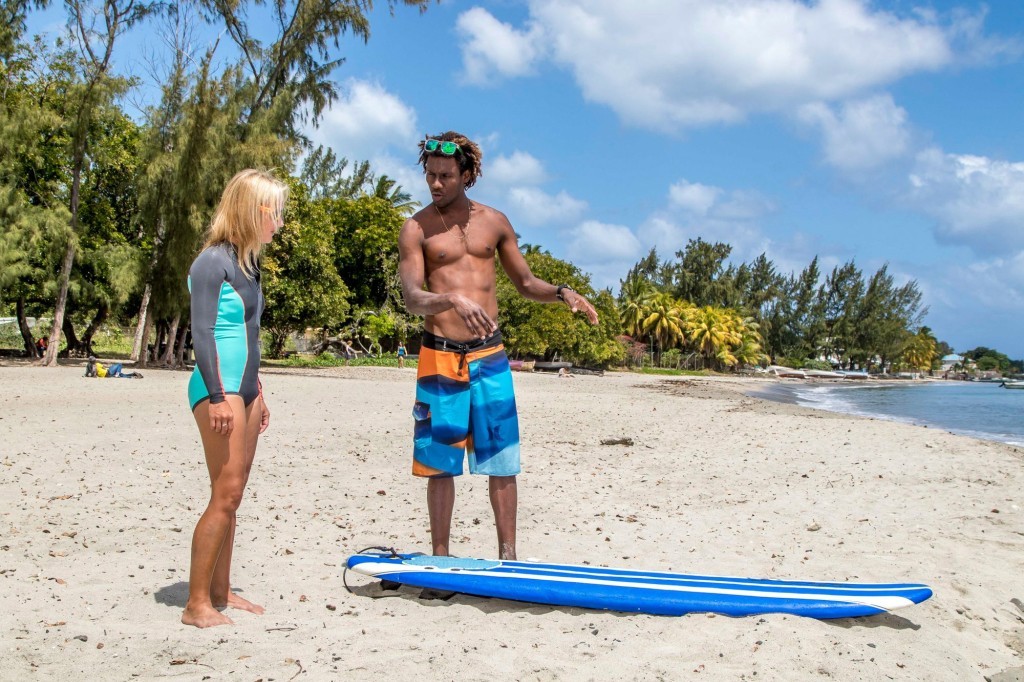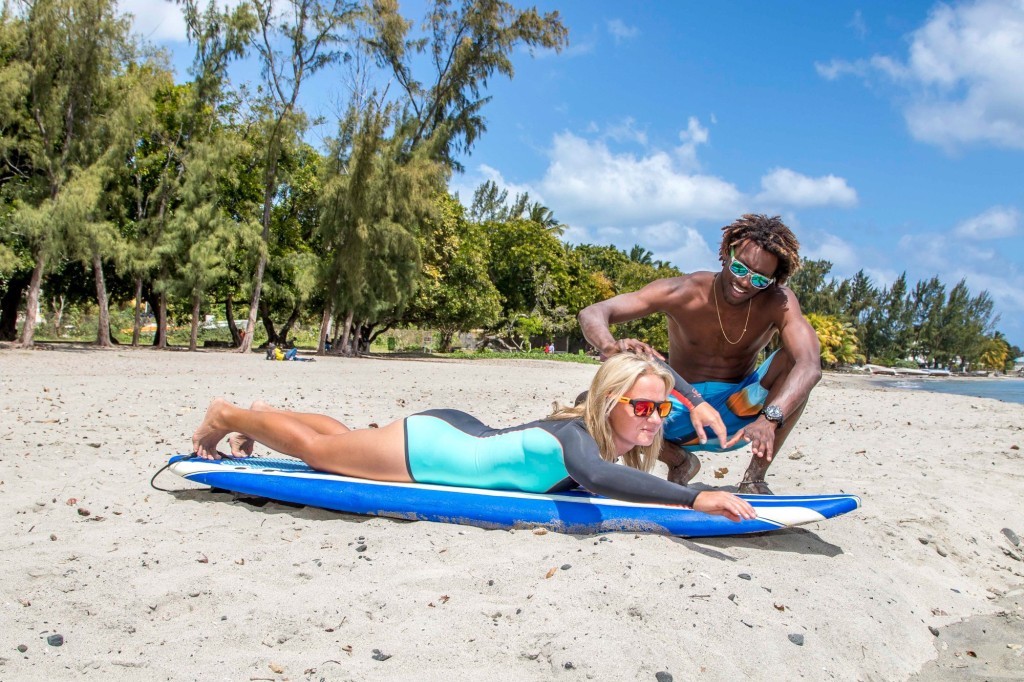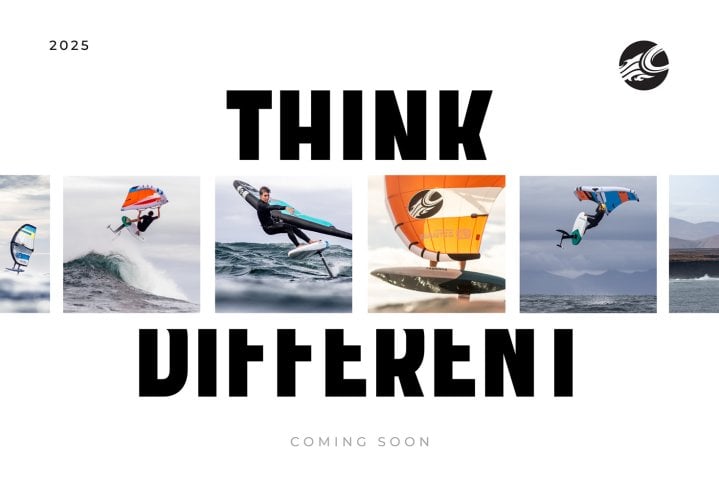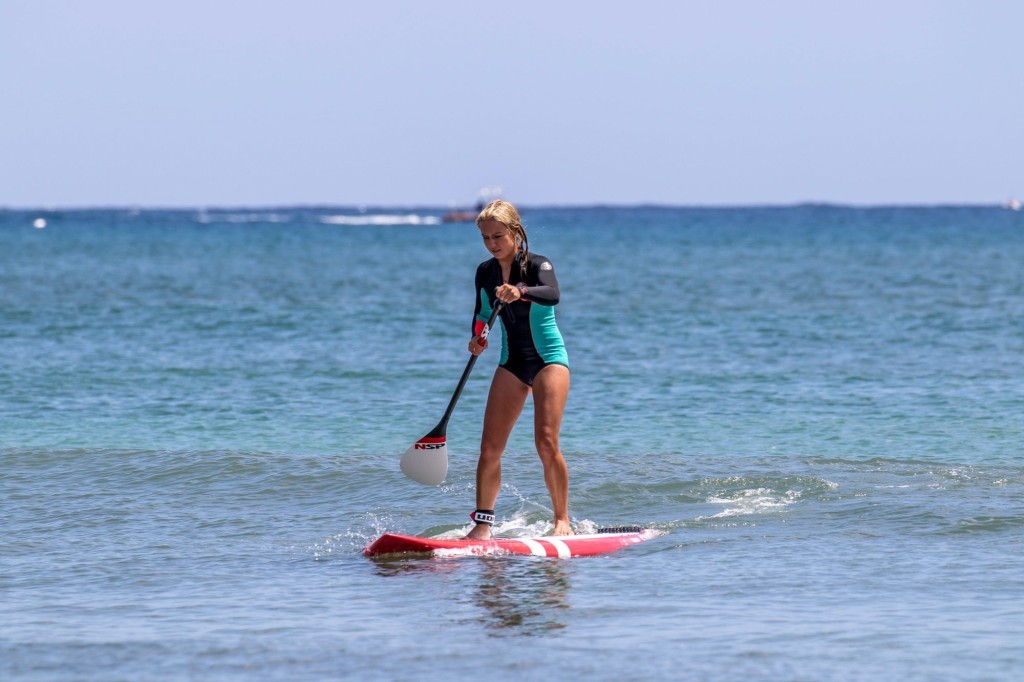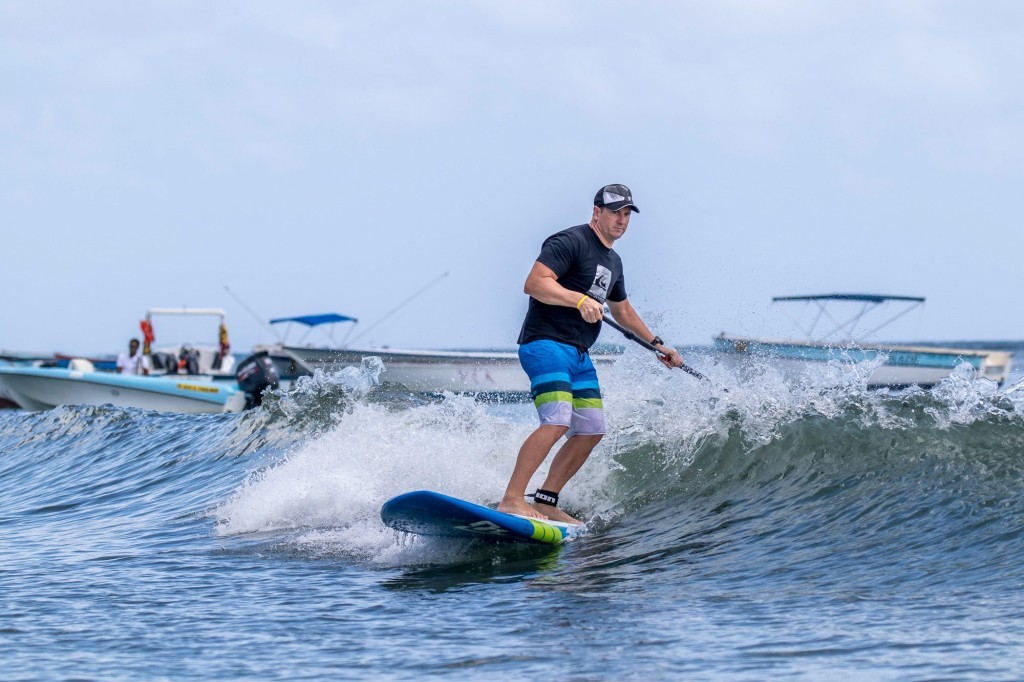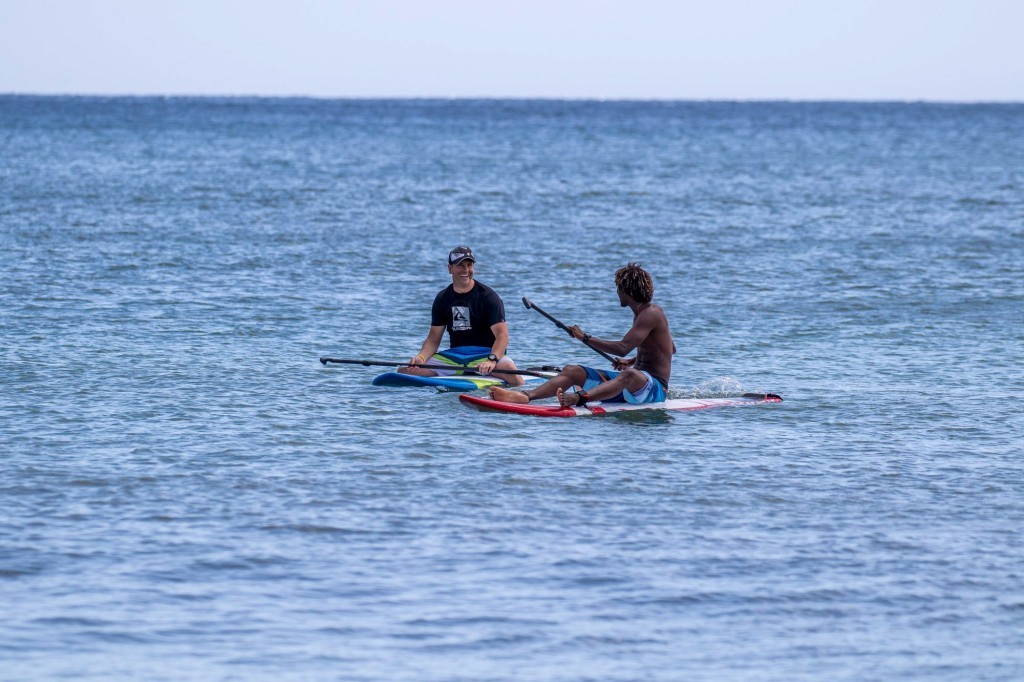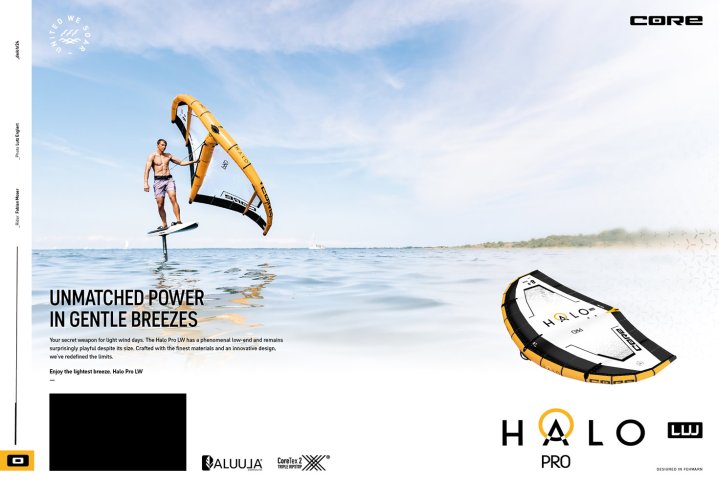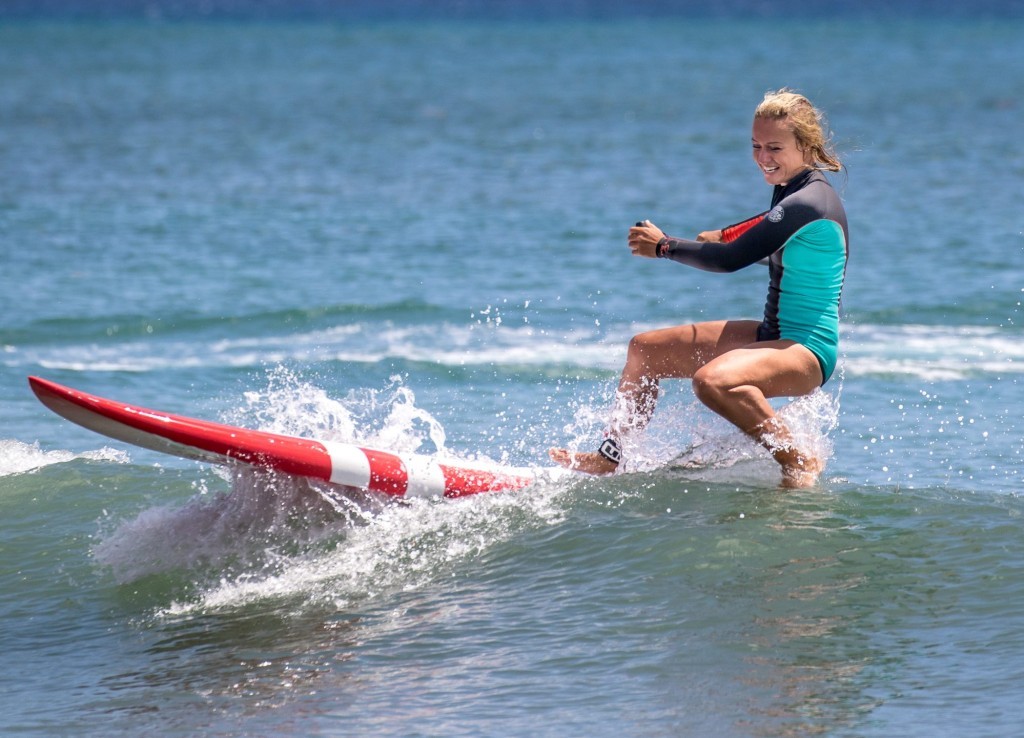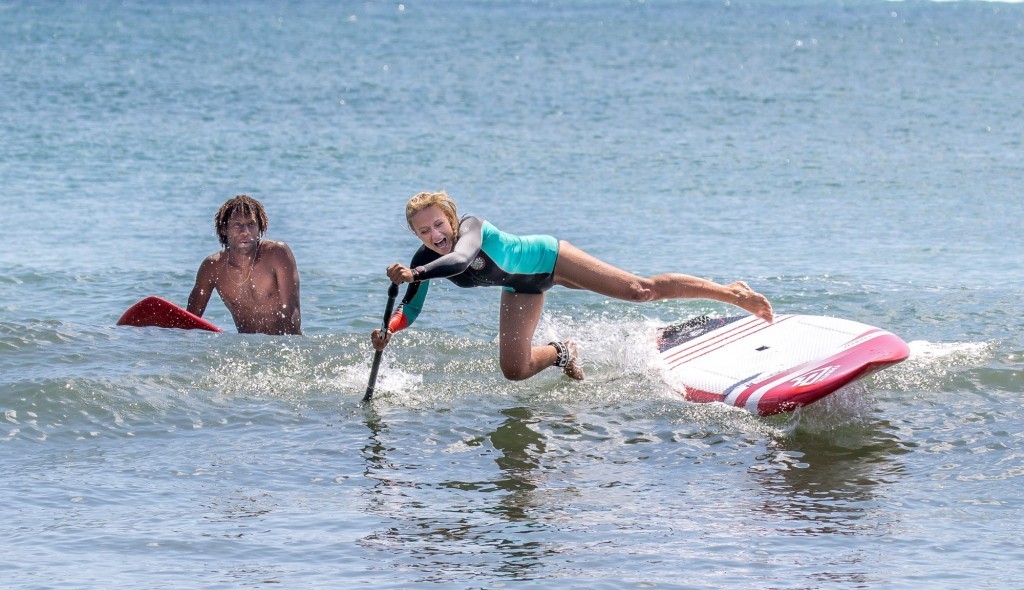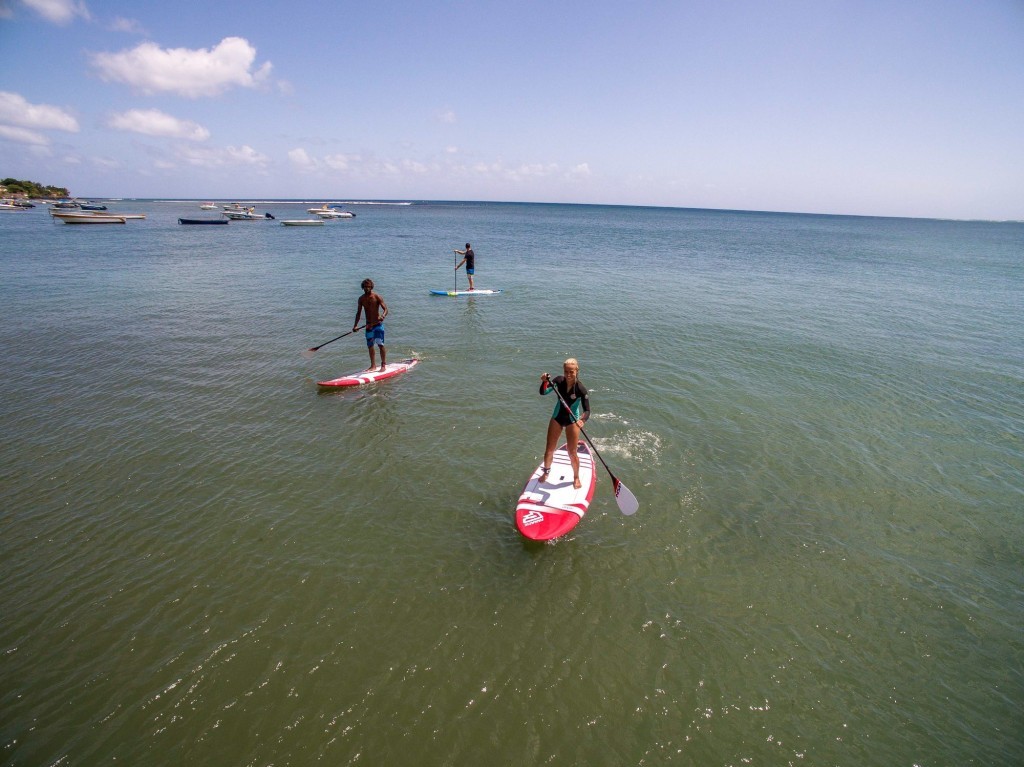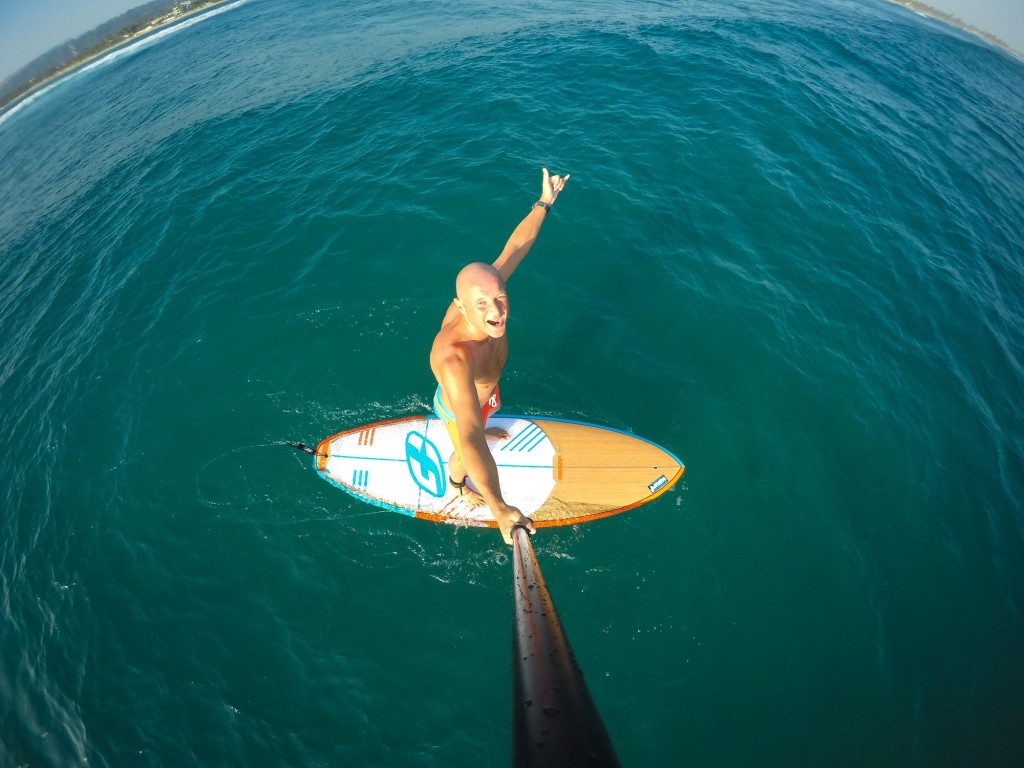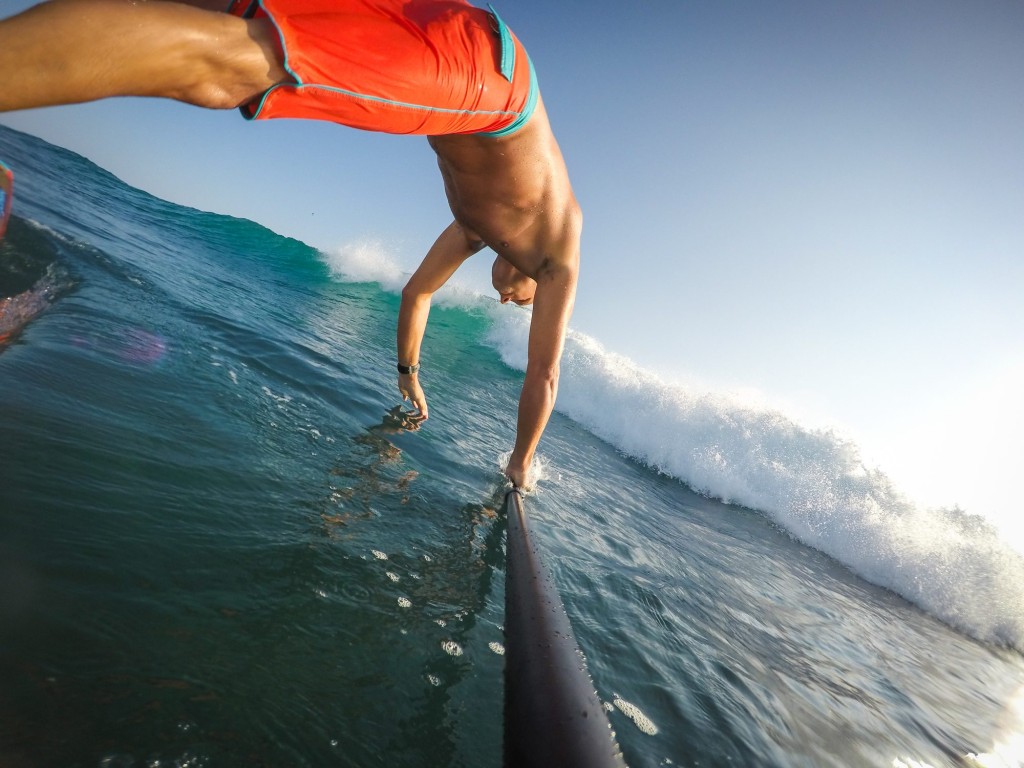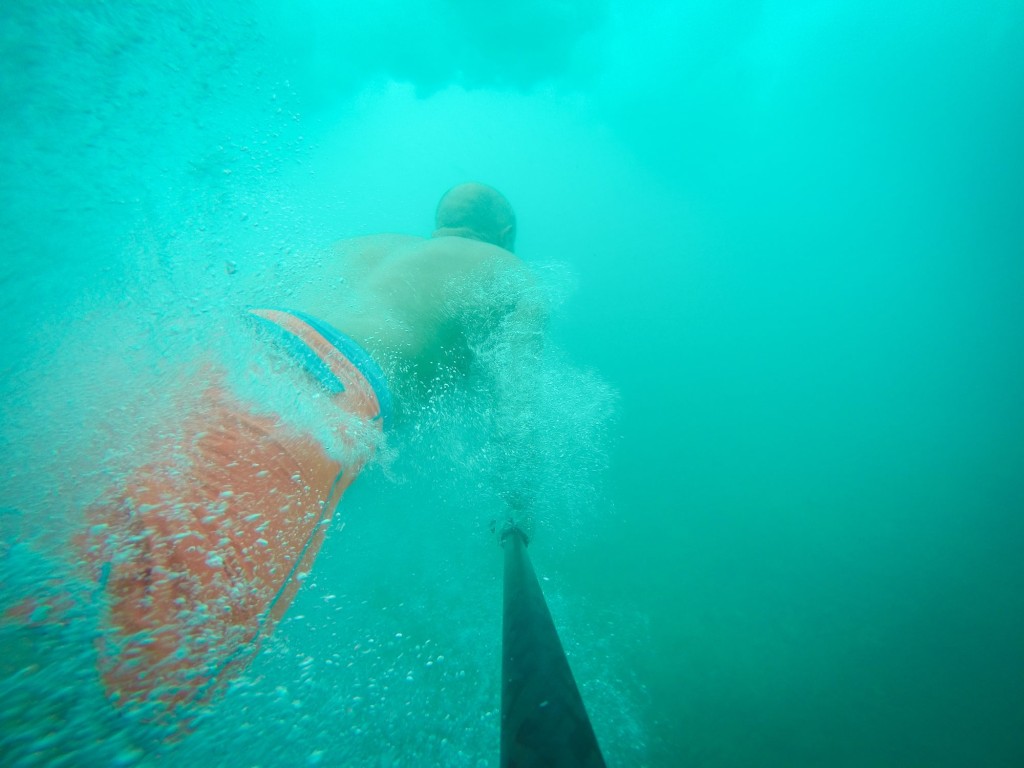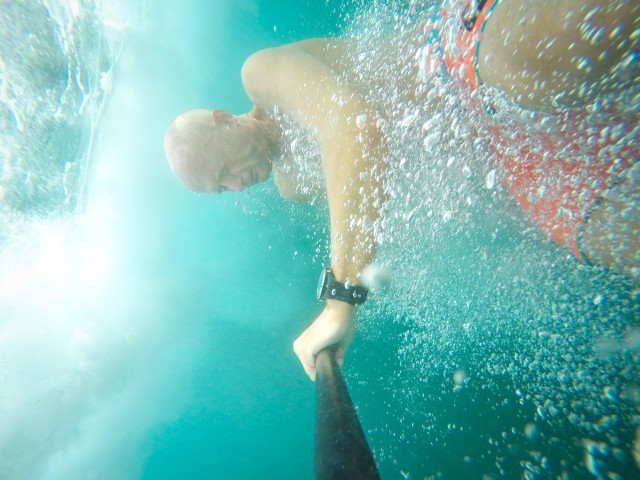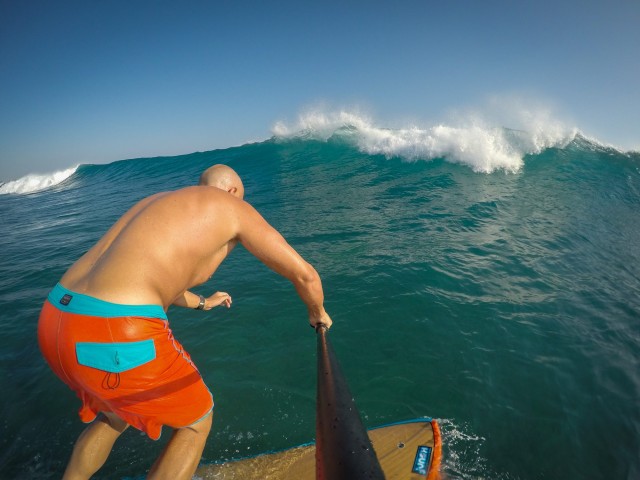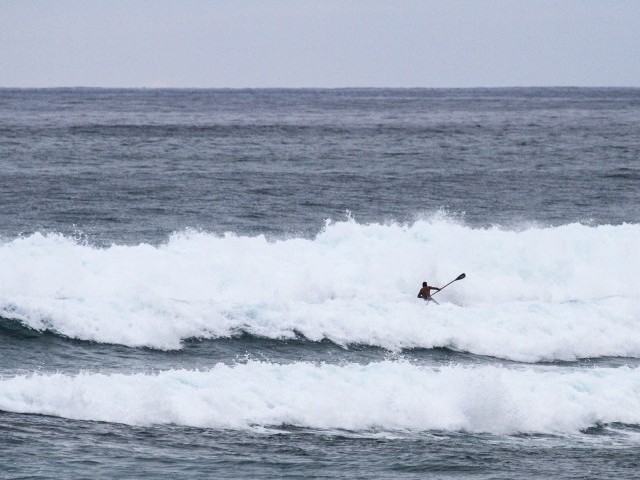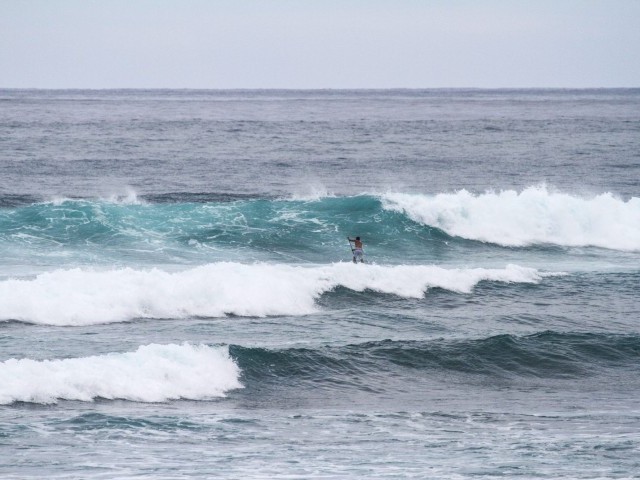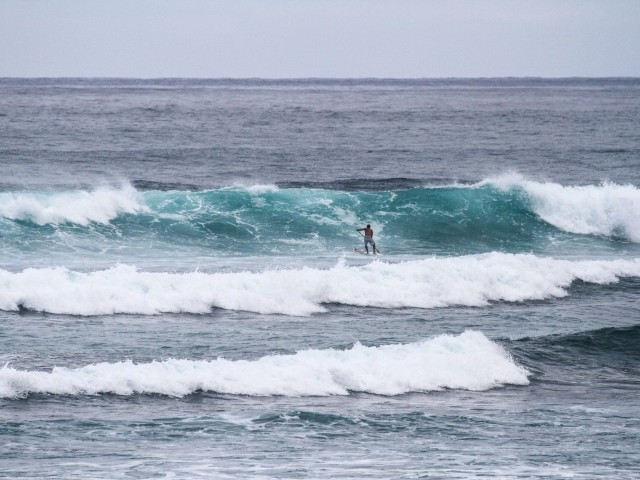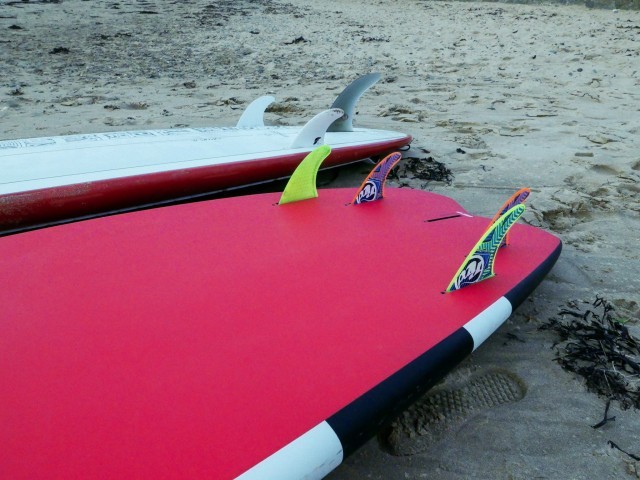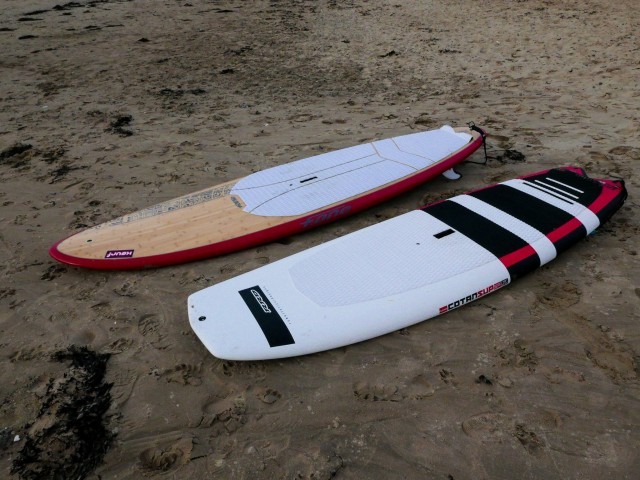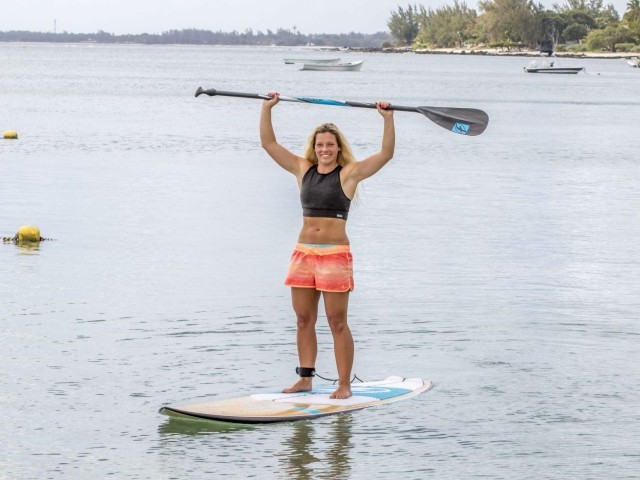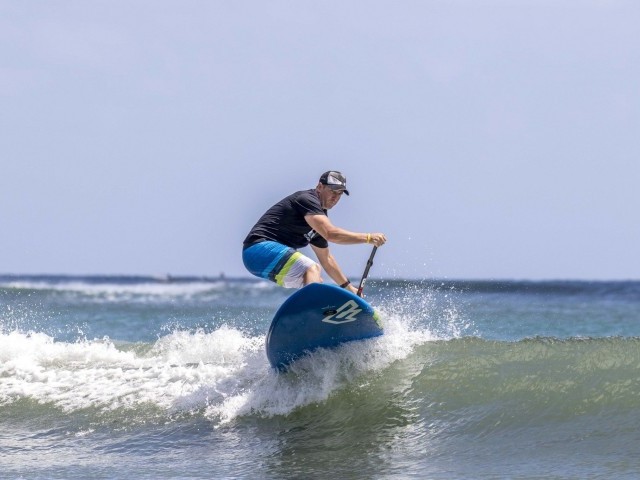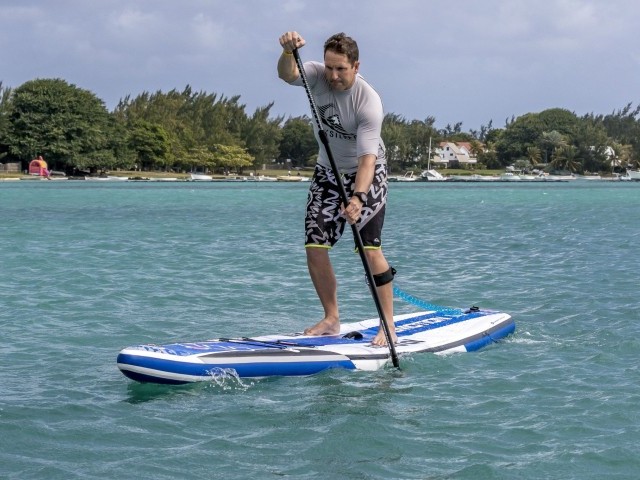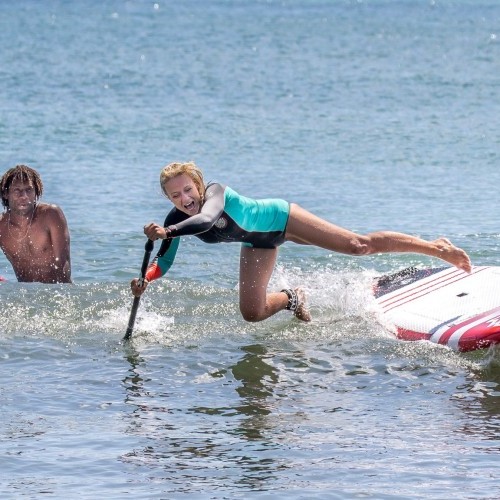
Bumps, Curves and Rites of Passage – Part 1
Technique / Beginner
Introduction
An introduction to Long Boards, Shortboards and Wave Riding SUP’s
Venturing into the surf from flat-water paddling for the very first time, albeit exciting - can be both daunting and dangerous, for yourself as well as other water users. Especially if you have no idea what you are doing with no preliminary background understanding of waves, currents, tides and differing breaks. There is certainly lots of information that you need to cover and factors that you need to be hyper-aware of, before venturing out.
If you’ve got no experience in the waves in your repertoire then arguably the best place to start is by going to a surf school. Ditch the big SUP and get a few lessons from a professional on a foamie, the background knowledge the instructor will impart with you will be priceless and stand you in good stead for your first adventures on a SUP in the swell.
The opportunity to make use of a board that is smaller and, in most instances, covered in spongy polyethene foam is ideally suited to aid in confidence building. The likelihood of falling is going to be very high on your first outing. Using a board that has slightly less size and volume and composed of foam will certainly provide you with a wholesome respect of what to expect. Then when you switch things up a gear with your stand up paddleboard and add a paddle to the equation, you will at least be better prepared.
In addition, the school will cover crucial aspects related to the reading, understanding and respect for Mother Nature and her fury. Remember that you are never too old to get a decent hiding from her so always remain humble and never underestimate of what she is capable of on a bad day.
A good analogy of what to expect when at the mercy of a moderately sized wave in a wipeout situation, or being pummelled in the shore break, is to compare it to being mugged.
From out of nowhere, you are pounced upon by something much larger and far stronger than you could ever be, helplessly you are buffeted and forced about in all directions while your bikini or boardies are totally cleaned out. As soon as it begins, it's over, even though the process itself, may feel like forever, and with a bit of luck, you are left sprawled spread-eagle on the beach. Usually minus your dignity, although hopefully not your boardies or bikini, replete with a mouthful of sand and a permanently parted hairstyle.Mother Nature 1 - Ego 0, although a healthy new respect for the ocean will now have been gained.
In time, it is natural, as with anything, that you get accustomed to the brutal onslaught of a wipe-out in the surf and learn to relax and “go” with the “flow”. Always remember that fear is a healthy way of your body telling you to respect, pay attention and concentrate on what you are doing. Panic in these, or any situation for that matter, can potentially be lethal.
Experience will help you to anticipate what is about to happen and allow you to overcome the initial anxiety associated with not being in control. Always remember that it is a finite event and has an ending, it’s just a matter of enduring the punishment for a short moment until it passes. As your experience grows, so will your ability to handle these situations and over the years you’ll push yourself further and further. Remember to respect the ocean and only paddle out into waves that suit your ability.
With the scary bit out of the way, and hopefully a solid respect for the high seas instilled within you, we can proceed. You should have learned the basics about paddling out, sets, avoiding bathing areas and respecting other water users already, either through your past knowledge, or our advice of taking a few surf lessons.
Let’s turn our focus to equipment and the kind of conditions that you should be contemplating for your first outing in the surf. As with flat-water paddling buoyancy, balance and board control are going to be pertinent. If you cannot control your board in flat-water conditions, you are going to face a truly uphill battle to “tame the beast” when presented with breaking waves, chop, surge and undercurrents.
This is why a surf stand up paddle session is one of the highest calorie burning exercises, 623-735 per hour, that one can do as a result of the minor corrective balancing movements that your core is constantly having to deal with in negotiating the surf zone, not to mention the amount of paddling.
Types of Wave Boards
When choosing your first board for a session in the waves you have a plethora of choices available to you, this can be both a positive and a negative. Arguably the best board for the surf on any given day is the one you have available to you. You can have as much fun on just about anything in the waves, but you may find certain boards increase your enjoyment factor. In addition to the various constructions out there you also have a multitude of shapes to choose from too. Ultimately your ability will be a huge deciding factor.
You need to be able to confidently paddle whatever board you take with you into the ocean, so choosing a 70-litre surf weapon when you weigh 100 kilos and have just started paddling isn’t going to end well. Equally, if you are light, and you opt for a 200-litre inflatable board you might find you struggle to engage the rail into the wave and are left just going wherever the board and wave decide to take you.
Inflatable boards are reasonably priced, almost indestructible and will also offer an element of safety for your first foray into the lumpy stuff. When you fall off, you’ll bounce rather than bruise, and they also won’t be too painful should you have a mishap involving another water user. Naturally, this should be avoided by choosing the right spot to head out, as discussed earlier.
While inflatables have many advantages, they are limited in their ability on a wave face. The thick rail can be hard to engage into a turn, and the increased buoyancy and lack of ability to change the fins can hinder the performance potential. Hard boards offer far more performance, and when you get into the wave category, these have specifically designed shapes, rails and rocker to deal with the task at hand.
You do need to exercise some caution when taking a hard board into the surf. Waves are powerful, and they will chuck your pride and joy, quite literally, about like it’s a small twig. If that then hits you, you’ll know about it. Basic surf skills can help you avoid injury, knowing where to position yourself in a wipeout, which way to dive off the board, etc. These skills can be gleaned from those first surf lessons and experience. The ultimate one to never forget is to never put the board between you and the wave; the wave should always hit you first and the board afterwards!
Size, Volume and Shortboards vs. Longboards
We covered the significance of this in our previous issue “size matters”. Board length and volume are going to hugely impact both your enjoyment factor as well as performance on a wave. Without enough buoyancy and you are going to struggle for balance and control in challenging conditions, the combination of the wind, chop and cross currents will see to that.
Too much and you are going to feel frustrated by the responsiveness and the potential “lag” in the board. To isolate and essentially overcome this obstacle, once again, practise makes perfect! If it is possible test, demo and try your friend's board before committing to a purchase in the shop.
Board choice is also highly dependent on your local conditions, ability and requirements in a surf SUP. Should your local breaks offer small to medium, 1ft – 4ft, running and peeling surf then perhaps, a longboard is going to provide you with the most amount of water-time and enjoyment. Whereas a break that offers, 4ft-6ft+, barrelling swell is going to push you towards slightly higher performance machine.
As long as you can make the most of the conditions and enjoy yourself in the process, that is all that matters. This is a lifestyle choice that encompasses ALL of the styles and board models; it is your personal preference that will ultimately dictate what board you prefer to ride.
Fins and Fin Setups
Thruster or Tri Fin
Originally surfboards had a single fin; then twin fins were developed to offer more manoeuvrability and better speed. The thruster was an amalgamation of the twin and single fin set ups. Developed by Simon Anderson, he was bigger and heavier footed and needed the central fin to offer more control and to stop him from sliding out. Most surfboards and SUP Boards feature a three fin thruster configuration; it’s been the darling of the surf industry for years, and it’s a tried and tested format that works well. The central fin provides directional stability while the side fins offer grip and bite on the wave. A thruster is perfect for carving smooth arcs on the wave, and the setup offers lots of control. However, the central fin creates more drag, so on faster hollow waves the boards can be slower.
Quads
Quad fins were developed to reduce the drag caused by the thruster set up, creating boards that were faster down the line. On fast hollow waves, the quad can offer you the pace you need to get round sections. On less powerful waves they can also help by giving the board more speed and drive to make the most of the sub-par conditions. A quad set up has a looser feel on the wave too, depending on placement of the inner rear fins you can really tune the way a board behaves. Further in and towards the back gives more directional stability, further out towards the rail and further forwards makes the board looser and easier to slide out on the wave.
It’s often said that 40% of a board's performance comes from the fins. While at the entry level it is important not to get too hung up on equipment, as you progress an understanding of your gear is paramount to your progression. Learning more about fin set ups and configurations can only be a good thing as you develop your skills.
Localism and Territorialism
Before we progress onto paddling out, it is only fair to mention that, in certain, “spots” in the world, no names mentioned, the concept of localism and territorialism is alive and firmly set in place. In many instances, this has come about over years and years of disrespectful visitors to the region resulting in the locals having to fiercely defend their territory with the only available means at their disposal – through abusive language and sadly, on remote occasions aggressive and violent behaviour.
When in doubt, ask first before venturing out, and, if possible, try to avoid areas that are renowned for this behaviour.
That being said, it is an enormous ocean offering many breaks on any given day added to a universal “stoke” for surfing, on all forms of craft. This feeling of "stoke" is bigger than all of us and usually, everyone is having too much fun to get aggressive with each other. If you ever find yourself in a situation where things are starting to get a little-heated rise above it. Be the bigger man or woman and simply diffuse the situation by paddling away. In the grand scheme of things the conflict is just not worth it and we certainly won’t be winning any endearment awards anywhere by retaliating.
The fantastic advantage of a paddleboard is that we have the freedom to choose from a wider “playground” than standard surfers who have to rely on only arms and legs for propulsion, and are limited to a particular paddle range as a result.
For paddle boarders, there are always “other” spots that will remain uncrowded as conventional surfers rely on a very specific wave that rears up in a certain way. Given the size of their “smaller volume” shortboards, they require a critical amount of wave energy to allow them to get to their feet and drive down the line carrying their speed. This drastically reduces the number of prime locations, which is further compounded by the various swell and wind elements that all have to combine in unison so that they can enjoy and get the most from the ocean.
Learn everything you can about surfing etiquette, then understand that the surfers were there first, and they have right of way, regardless. Paddle out and observe the situation first, don't paddle out and take as many waves as you can, let the crowd know that you aren't a threat. On a SUP we can catch so many more waves in a session than a traditional surfer, so be patient wait your turn and better still paddle to a break the surfers can't get to, or choose not to use.
Common sense goes a long way in ensuring we put across the right message to other water users. Having basic skills and confidence in the water also shows that you can handle your craft and aren't a danger to anyone.
Know you know the basics, have chosen the right gear and understand a little more about the ocean, it's time to check out part 2 over on our website!
CLICK HERE FOR PART 2
This technique article was in Issue 2 of Tonic Mag.
Related
By Bryn James
Bryn is a highly respected waterman who is very popular amongst his peers. Having been the competition director for the longest running multi sports events (Jeep Apparel South Coast Carnival in South Africa), he continues to be a fierce competitor in professional SUP and Kitesurfing events, spanning 15 years. His affinity for the sea has no bounds and he is perpetually motivated to share positive ocean experiences with everyone he meets!




